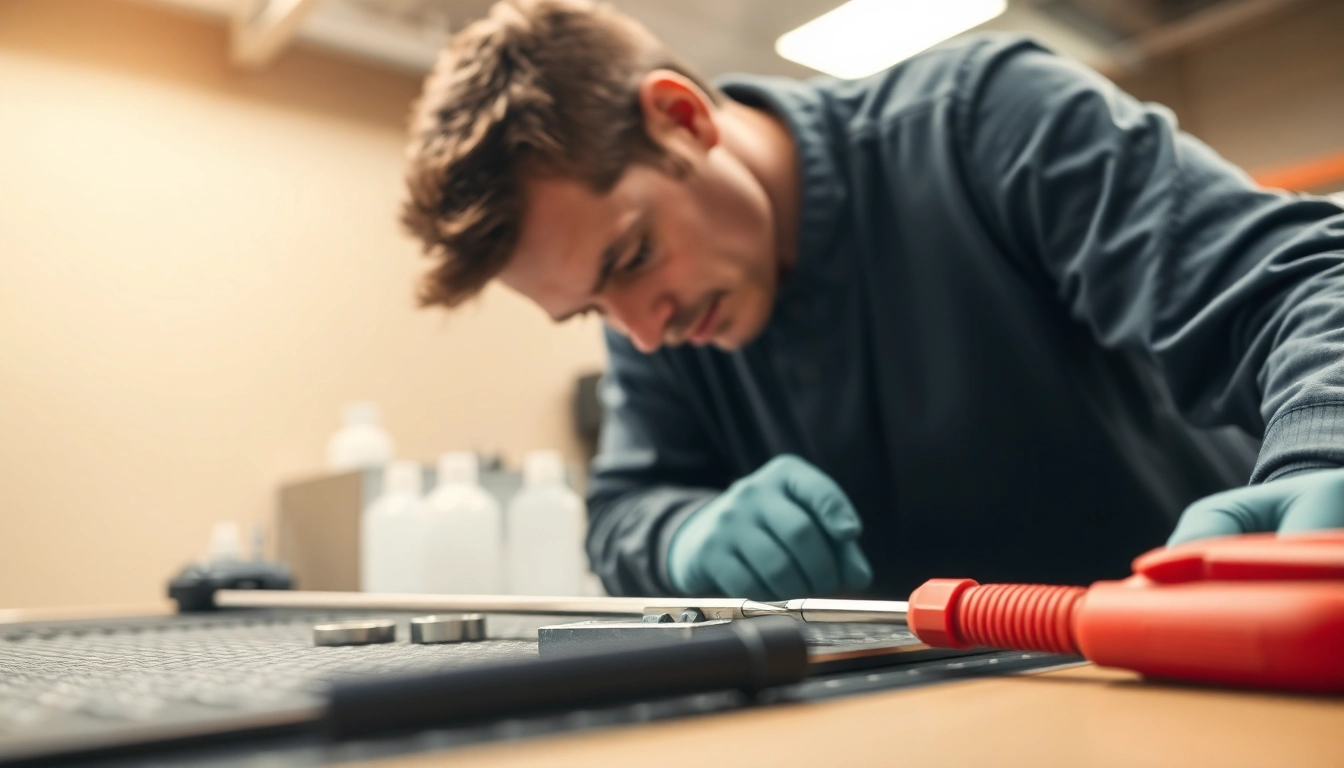Essential Guide to Prep Table Repair: Troubleshooting Common Issues

Understanding Prep Table Repairs
In the fast-paced world of commercial kitchens, the prep table repair is a vital aspect that often goes unnoticed until an issue arises. Prep tables serve as critical infrastructure in any kitchen, offering space for food preparation, ingredients storage, and maintaining food freshness. Understanding the inner workings of these tables and the common problems they face can make a significant difference in ensuring your kitchen operates smoothly.
What Is a Prep Table?
A prep table is an essential kitchen equipment piece used primarily for food preparation. These tables often come equipped with refrigeration capabilities to keep ingredients fresh and at optimal temperatures for various culinary tasks. Available in various sizes and configurations, prep tables cater to specific needs, whether for a bustling restaurant or a small cafe. They generally feature compartments for ingredients, a flat surface for chopping and mixing, and, in some cases, integrated refrigeration units.
Common Issues Leading to Prep Table Repair
Despite their robust design, prep tables are not immune to issues. Common problems that necessitate repairs include:
- Temperature control failures: Fluctuations can lead to spoiled food and health risks.
- Poor door seals: Allowing cold air to escape affects performance and leads to energy inefficiency.
- Mechanical breakdowns: From compressors to electrical issues, mechanics can fail from age or misuse.
- Physical damage: Regular use can cause dents, scratches, and other physical issues that may need rectification.
Importance of Regular Maintenance
Regular maintenance of prep tables is crucial for preventing unexpected breakdowns. Scheduled inspections, cleaning, and necessary adjustments can extend the lifespan of the equipment, ensuring it operates at peak efficiency. This proactive approach not only saves money in the long run but also boosts food safety standards by minimizing risks related to temperature fluctuations.
Identifying Prep Table Problems
Recognizing the symptoms of prep table problems early can prevent more severe issues and costly repairs down the line. The following are some common indicators of malfunction.
Temperature Control Failures
Temperature control failures are among the most critical issues affecting prep tables. These failures can manifest as inappropriate internal temperatures, either too high or too low. Signs include:
- Food items showing signs of spoilage.
- Frost build-up inside the refrigerator.
- Unusual noises coming from the unit.
Diagnosis may involve checking the thermostat settings, examining the compressor, and inspecting the refrigerant levels.
Poor Door Seals
Another common issue encountered is poor door seals. If the seals on your prep table doors are damaged or worn out, it can lead to significant air loss and temperature fluctuations. Signs of a poor door seal include:
- Excessive condensation around the seal.
- Visible decay or cracks on the rubber gasket.
- Increased energy bills due to inefficient cooling.
Regular inspections and replacing worn seals can mitigate these problems.
Refrigeration System Malfunctions
Refrigeration system malfunctions encompass a broad range of potential problems, including compressor issues, blocked vents, or low refrigerant levels. Each of these can severely impact the operational stability of the prep table. Symptoms include:
- Inconsistent cooling across different sections of the table.
- Compressor running continuously without reaching the desired temperature.
- Unusual sounds from the refrigeration system signaling mechanical failure.
Identifying this issue often requires professional assistance for diagnostics and repair.
Step-by-Step Prep Table Repair Guide
Repairing a prep table isn’t usually an overly difficult task, but it requires the right tools and a systematic approach. Here’s a step-by-step guide to follow when you need to perform repairs.
Tools Needed for Prep Table Repair
Before starting any repairs, ensure that you have the necessary tools handy. Some of the common tools include:
- Basic hand tools (screwdrivers, wrenches, etc.)
- Multimeter for electrical testing.
- Refrigerant gauges.
- Cleansers for degreasing and sanitizing.
- Thermometers to verify temperature readings.
Repairing Thermostat Control Issues
Addressing thermostat control issues is critical for maintaining food safety. To troubleshoot thermostat issues:
- Begin by checking the thermostat settings. Ensure that it is set to the correct temperature.
- Inspect the thermostat for any visible signs of damage or malfunction.
- Use a multimeter to verify the thermostat’s functionality by measuring voltage.
- If broken, replace the thermostat with an appropriate model for your prep table.
Fixing Leaks and Seals
Leaks often stem from poor door seals or damaged components. Follow these steps to repair:
- Identify the source of the leak — it may be the door seal, condensation drain, or other components.
- Examine and replace worn or damaged seals; ensure the new seal fits tightly around the door.
- If leaks arise from the refrigeration system, consult a technician for potential refrigerant leaks.
Best Practices for Prep Table Maintenance
Ongoing maintenance improves efficiency and extends the life of the unit, helping you avoid costly repairs. Implementing best practices can keep your prep table functioning optimally.
Regular Cleaning and Sanitation
Maintaining a clean prep table is essential for food safety. Here are guidelines for effective cleaning and sanitation:
- Remove food debris from all surfaces regularly.
- Use food-safe cleaning agents to scrub surfaces.
- Rinse off all cleaning agents thoroughly.
- Sanitize with an approved solution and allow the prep table to dry completely.
Checking for Electrical Issues
Electrical issues can lead to breakdowns or inefficient operations. Regularly check for:
- Loose wires or connections.
- Burnt fuses or tripped breakers.
- Unusual sounds that indicate motor or electrical problems.
If any concerns arise, engage a qualified technician to perform in-depth diagnostics.
Scheduling Professional Inspections
Even with diligent maintenance, occasional professional inspections can be invaluable. Schedule these inspections bi-annually or at least annually to catch any burgeoning issues before they become major concerns.
Cost Considerations for Prep Table Repair
Repairing a prep table often raises questions regarding cost-effectiveness. Understanding the factors at play can help in decision-making.
Average Costs for Common Repairs
The costs of repairs can vary widely based on the severity of the issue and parts needed. Common costs include:
- Thermostat replacement: $150 – $300
- Door seal replacement: $30 – $100
- Compressor repairs: $500 – $1,500, depending on the unit size and complexity.
Getting multiple quotes will help you find the best deal for your specific repair needs.
Evaluating Repair vs. Replacement
When the repair costs approach or exceed a significant percentage (often 60-70%) of the cost of replacement, it may be time to consider a new unit. Evaluating your table’s age, performance, and condition can help with this decision.
Finding Affordable Repair Services
Finding skilled and affordable repair services can take time and research. Look for local specialists, read online reviews, and ask for recommendations from other business owners. Ensure to evaluate their experience specifically with prep tables.






